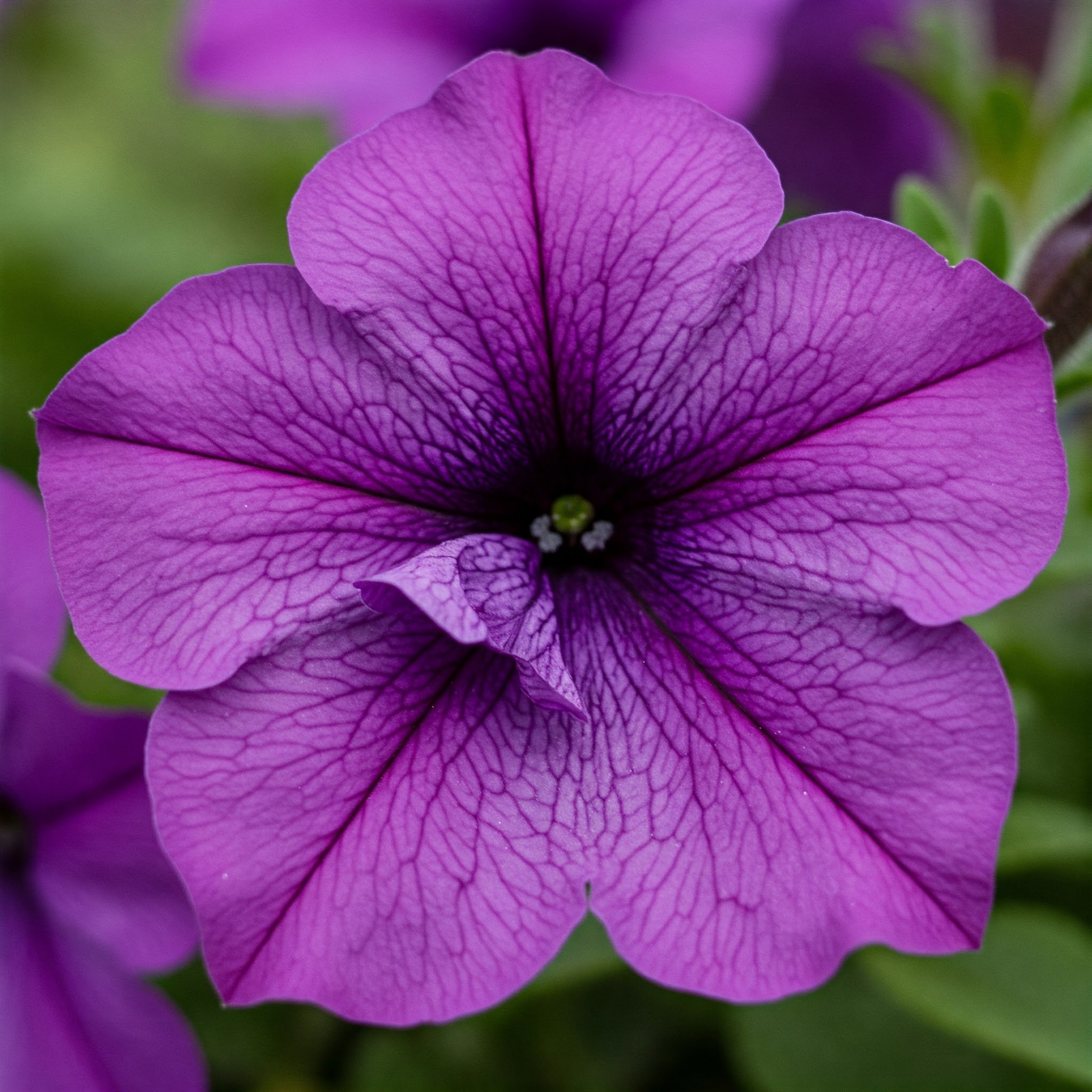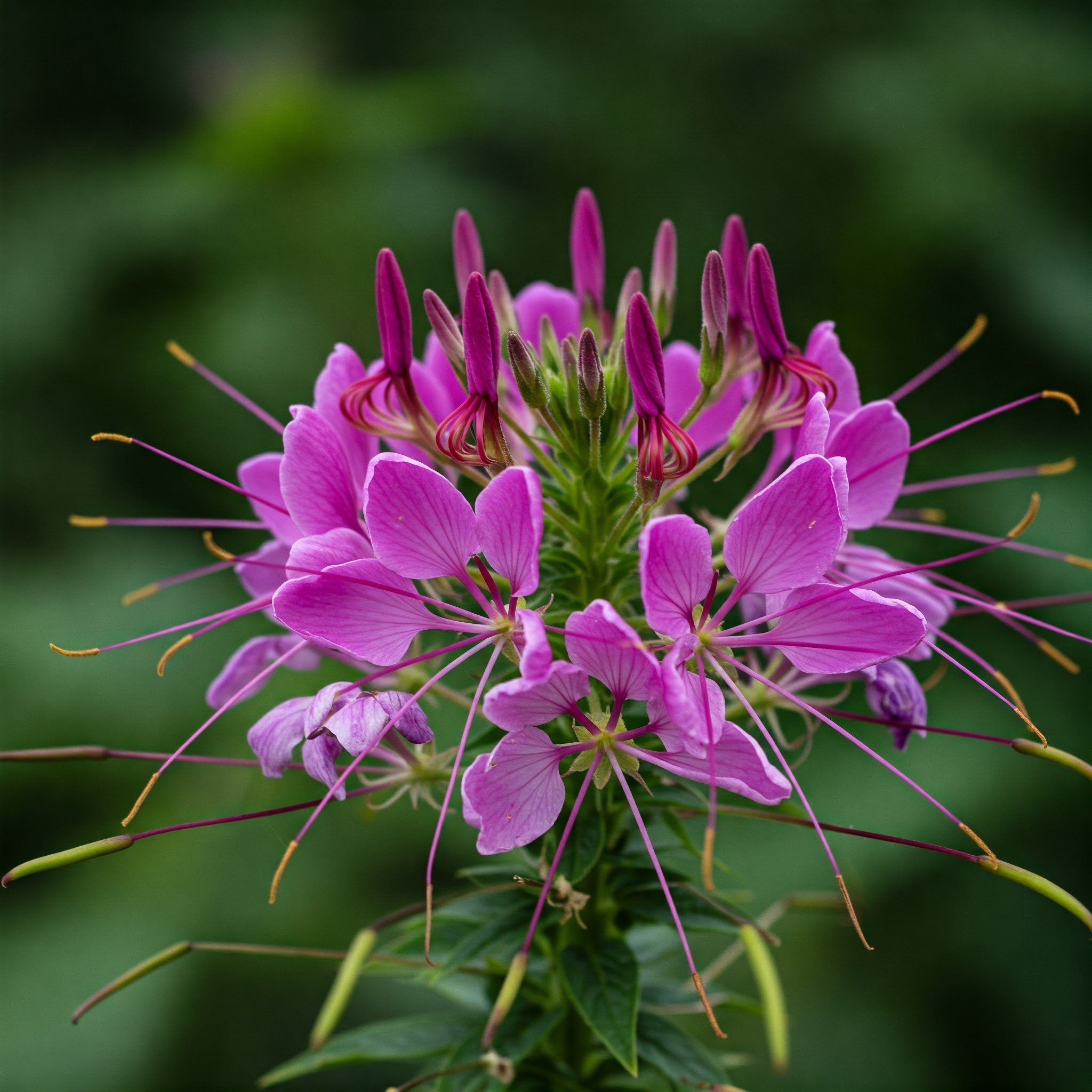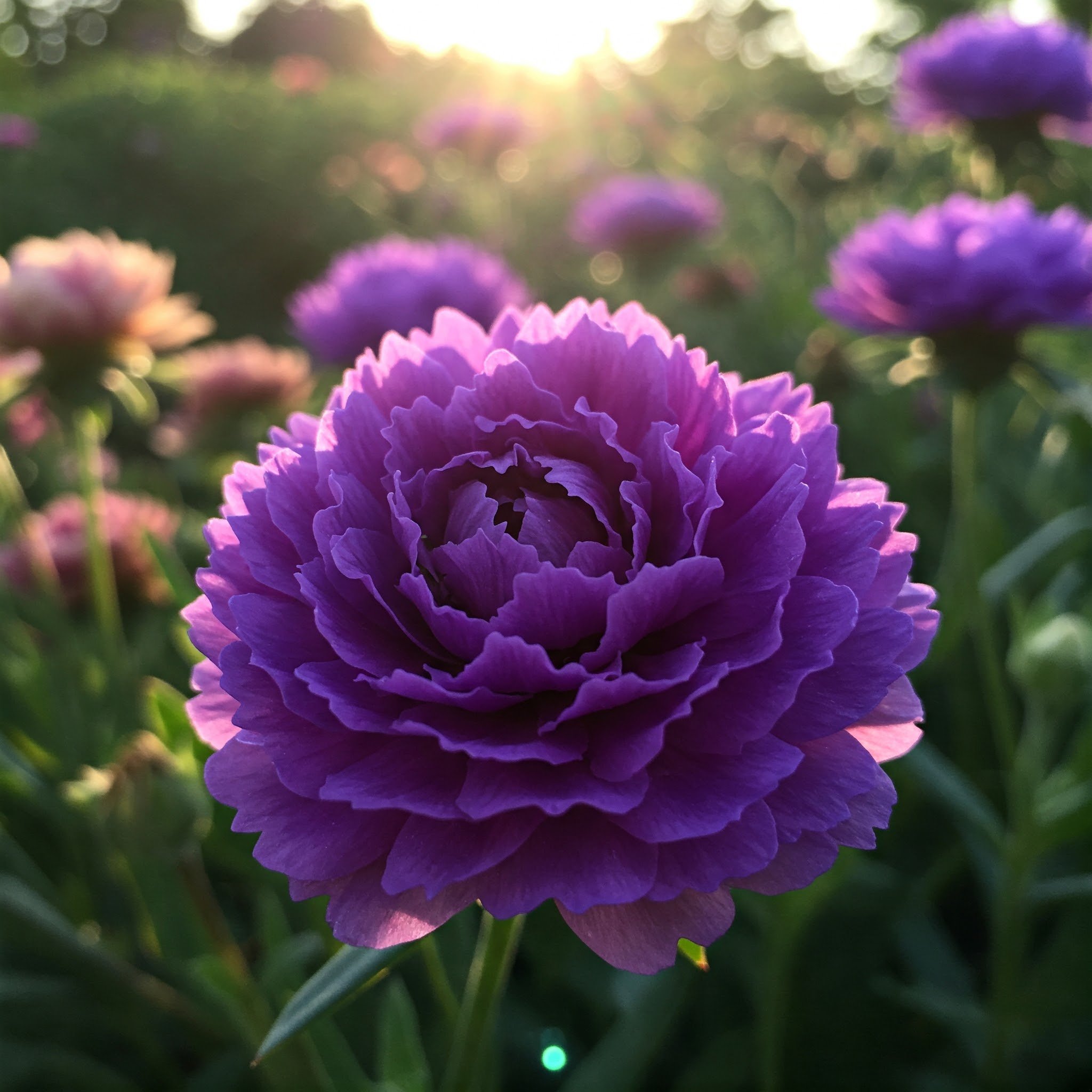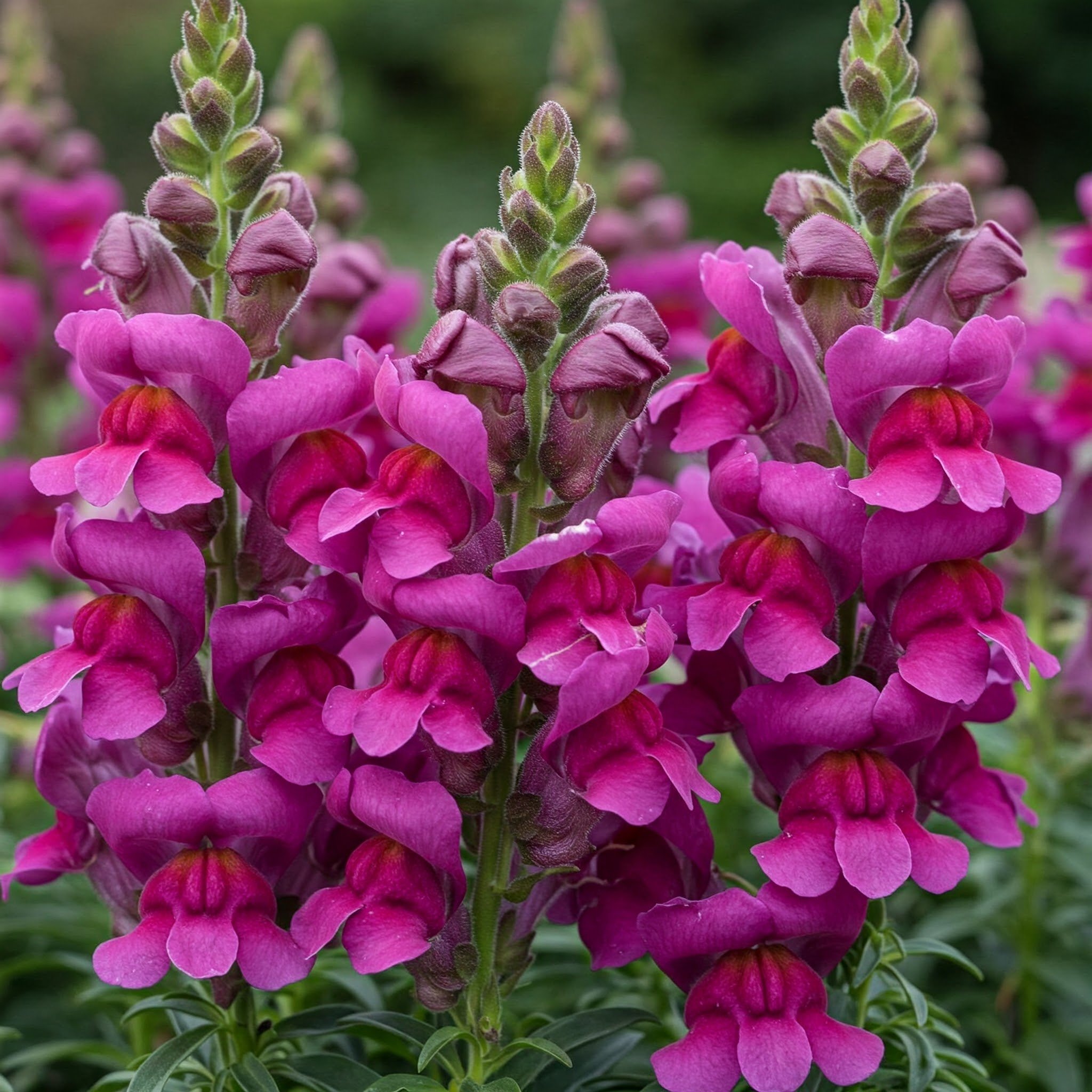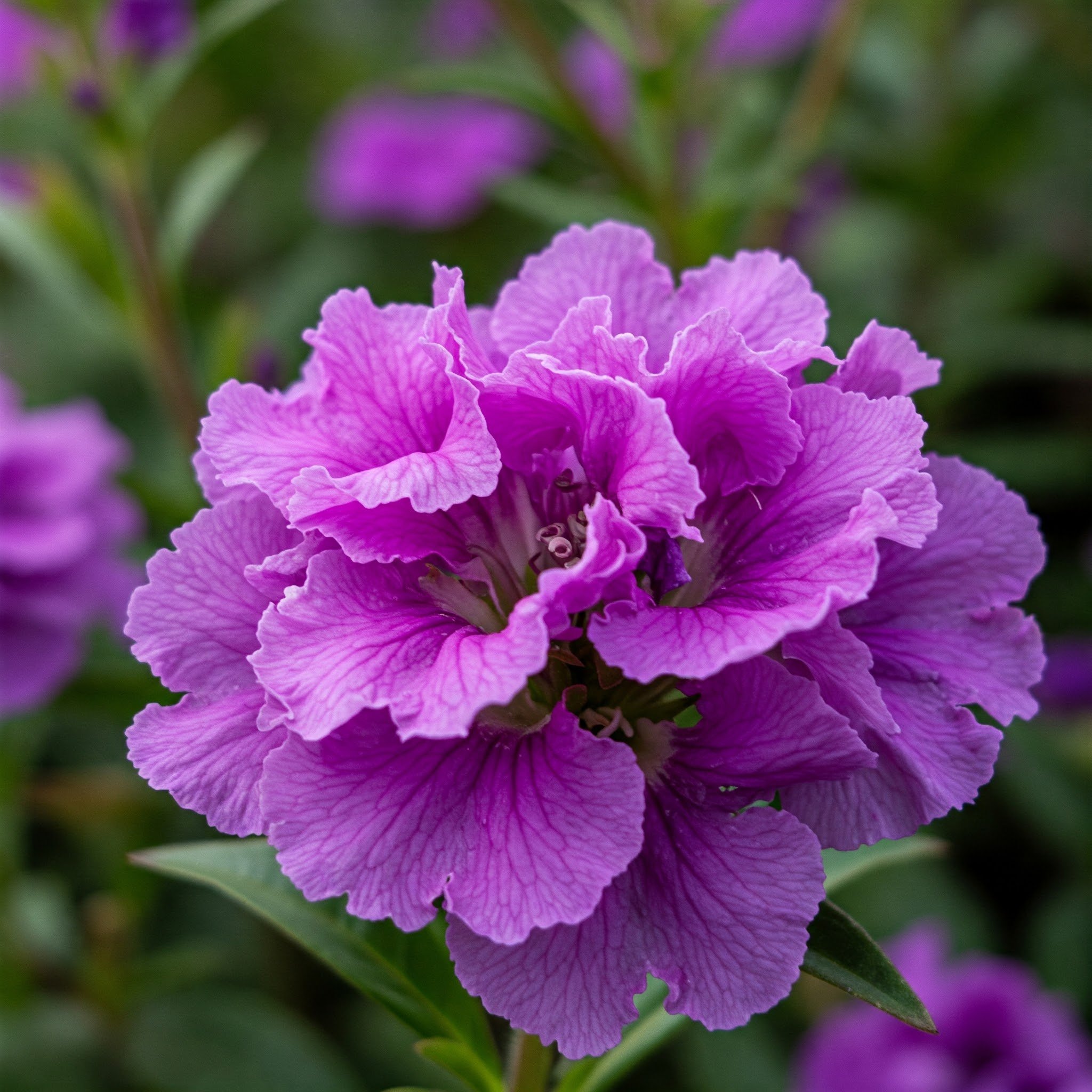15 Purple Annuals to Brighten Your Garden
Ready to add a regal touch to your garden? Explore 15 stunning purple annuals that offer vibrant color, easy care, and long-lasting beauty—all in one handy guide!
Have you ever wandered through a garden and felt instantly drawn to those bold, royal hues that pop against the green foliage? Purple annuals have a knack for stealing the spotlight, creating an enchanting atmosphere that speaks to the senses. Whether you’re an experienced gardener or just dipping your toes into the world of horticulture, these stunning flowers are sure to capture your imagination. With their short but spectacular lifespan, annuals reward you with blooms that feel both precious and abundant—like fireworks lighting up a summer sky. If you’ve been looking for ways to brighten your outdoor space with purple’s charismatic glow, you’re in the right place. Let’s dive into 15 purple annuals guaranteed to add a dash of magic to your garden!
1. Petunia ‘Evening Scentsation’
Petunias are practically the pop stars of the annual flower world, and it’s easy to see why. They thrive in containers, hanging baskets, or flowerbeds, producing plenty of color for minimal fuss. But if you want a purple hue that doubles as a perfume factory, look no further than the ‘Evening Scentsation’ variety. Its lavender petals unfurl like delicate trumpets, emitting a sweet, almost candy-like fragrance that intensifies at dusk. Imagine stepping into your yard after dinner and being greeted by subtle waves of floral perfume—just magical. These petunias enjoy full sun, so find them a sunny spot where they can soak up rays. Give them regular watering, plus a bit of fertilizer, and they’ll reward you with a steady parade of blossoms that bring both color and scent to your garden oasis.
2. Verbena ‘Lanai Purple Star’
When you think of a reliable, easy-to-grow annual with vivid purple blooms, Verbena often tops the list. The ‘Lanai Purple Star’ variety is a real showstopper, sporting star-patterned florets that cluster together to form eye-catching flower heads. It thrives in containers as well as along borders, thanks to its slightly trailing growth habit. Give it plenty of sunshine, and it will bloom enthusiastically throughout the season, brightening your garden without demanding constant attention. If you’re short on space, no worries—this Verbena stays relatively compact, making it perfect for small gardens or patio pots. Regular deadheading will encourage even more blooms, keeping that purple sensation going strong. Plus, butterflies adore Verbena, so expect some fluttering visitors to show up and add a little extra magic to the scene.
3. Salvia splendens ‘Purple Sage’
Sage might conjure up images of savory herbs in the kitchen, but Salvia splendens sets a different stage. Known for their stately spires of tubular blooms, these “purple sage” varieties add an elegant, architectural flourish to flowerbeds and containers. Imagine them as the tall, regal guardians of your garden—somewhere between a dignified knight and a graceful dancer. They’re also a magnet for hummingbirds, who just can’t resist dipping their beaks into those nectar-rich blossoms. Position these salvias in a spot with full to partial sun, and water them consistently to keep the soil moist but not waterlogged. For a punch of color that soars above lower-growing plants, scatter a few ‘Purple Sage’ salvias in the back row. It’s the perfect way to create a layered, storybook-like garden design.
4. Alyssum ‘Royal Carpet’
If you’re looking for a plant that forms a soft, purple drift along pathways or at the edges of raised beds, Alyssum ‘Royal Carpet’ could be your new best friend. This low-growing gem spreads gracefully, creating a delicate carpet of tiny lavender blossoms that exude a light, honey-like fragrance. Think of it like a plush rug you’d roll out for special guests—only in this case, your guests are bees, butterflies, and your own delighted eyes. Alyssum thrives in full sun to partial shade and doesn’t require a lot of fuss. A moderate watering schedule will keep it lush, and occasional pruning can help extend blooming into the hotter months. Line your walkways or tuck it into containers for a romantic, fairy-tale vibe that captures hearts at first glance.
5. Ageratum ‘Hawaii Blue’
Ageratum, often called floss flower, earns its nickname from the fuzzy, tassel-like bloom clusters that burst out in vibrant shades of blue and purple. ‘Hawaii Blue’ is a particular favorite for those who love a lush, tropical twist in their gardens. Its fluffy blossoms almost look like miniature pom-poms that cheer you on every time you stroll among the greenery. And like a true island traveler, this plant prefers warm weather, making it an excellent choice for summer borders and containers. Provide a spot with rich, well-draining soil and keep it consistently watered without going overboard. Pair it with bright oranges or yellows for a striking color contrast, or cluster it with other purple annuals to create a soothing monochromatic palette reminiscent of gentle ocean waves under a moonlit sky.
6. Cleome ‘Violet Queen’
If you crave drama in your garden, say hello to Cleome ‘Violet Queen.’ With tall, spidery blooms that look like they could have been plucked from a tropical rainforest, Cleome commands attention. Picture a whimsical firework frozen in time, shimmering in pastel purple. These plants can reach up to four feet, becoming towering beacons of color in your flowerbeds. They’re particularly well-suited to hot, humid climates and can handle periods of dryness, which means less babying and more enjoying. Cleome also earns points for attracting pollinators like bees and butterflies, turning your garden into a buzzing, fluttering paradise. Just be cautious of the tiny spines on the stems—wear gloves when handling. If you’re looking for a statement annual that offers both height and mystique, ‘Violet Queen’ delivers in spades.
7. Sweet Pea ‘Cupani’s Original’
Sweet peas are the quintessential cottage garden bloom, beloved for their heady perfume and delicate, ruffled petals. ‘Cupani’s Original’ is a heritage variety that traces its roots back centuries, carrying with it an air of romance and nostalgia. Imagine stepping into a literary garden scene—these climbing vines scramble up trellises or fences, draping them in purple tones and a fragrance that’s nothing short of poetic. They do appreciate cooler weather, so plant them early in spring to let them establish before high heat rolls in. Regular watering keeps them happy, and picking the blossoms actually encourages more growth—like a secret handshake between you and the plant. If you’ve ever dreamed of putting together freshly cut bouquets that scent your home, these sweet peas will quickly become your best ally.
8. Stock ‘Vintage Purple’
Stock might not get as much attention as some annual superstars, but don’t sleep on ‘Vintage Purple’ if you love a garden filled with rich fragrance. Each stem is loaded with tightly packed blooms that create a column of purple petals, exuding a sweet, spicy aroma that lingers in the air. Think of it like the secret ingredient in a gourmet dish—subtle yet transformative. Stock prefers cooler temperatures, so early spring or fall plantings are ideal. Position it in a spot where you can easily brush by to enjoy its scent, like near a walkway or close to a window you frequently open. With regular feeding and consistent moisture, these blossoms can persist for weeks, turning your garden into a perfumed haven reminiscent of a flower shop in full bloom.
9. Browallia ‘Amethyst Flame’
Browallia might fly under the radar compared to flashy annuals, but once you’ve experienced ‘Amethyst Flame,’ you’ll wonder how you ever lived without it. This shade-loving beauty produces star-shaped purple flowers that have a gentle gleam, like tiny jewels hidden in a forest undergrowth. If your garden is shaded by tall trees or nestled beside your home, Browallia offers an excellent way to bring color to those dimmer corners. It thrives in containers, hanging baskets, or tucked into borders beneath larger plants. Keep the soil consistently moist, and give it a little fertilizer boost for longer-lasting blooms. In return, ‘Amethyst Flame’ forms a lush, green canopy dotted with subtle lavender stars. It’s like having a twilight sky at ground level, perfect for those who love a touch of mystery in their gardens.
10. Zinnia ‘Purple Prince’
No flower shouts “summer fun” quite like Zinnia, and ‘Purple Prince’ brings a regal twist to this garden favorite. Its bold, layered petals open up wide, forming a radiant purple disc that practically begs for attention. Imagine a dazzling sunrise, except in shades of grape and violet. Zinnias love full sun and reward you with bright blooms for weeks on end, especially if you keep deadheading them. Their upright, sturdy stems also make them fantastic candidates for cut flower arrangements—snip a few for the dining room table, and you’ll instantly elevate the atmosphere. Heat doesn’t faze these tough flowers, and they generally shrug off pests with minimal fuss. If you’re seeking a reliable annual that pairs well with marigolds, cosmos, or salvias, let ‘Purple Prince’ take the throne in your garden.
11. Pansy ‘Matrix Purple’
When the weather leans cooler in spring or fall, pansies shine like a hidden gem. ‘Matrix Purple’ brings you large, velvety petals in a rich shade that’s almost hypnotic. The iconic “face” of the pansy adds a dash of whimsy—think of it as a garden greeting every time you step outside. These blooms are perfect for window boxes, containers, or tucked along garden edges. They prefer partial to full sun and appreciate fertile, well-draining soil. While pansies can slow down in the heat of midsummer, giving them some afternoon shade helps extend their blooming window. If you keep up with removing spent blossoms, you’ll encourage more flowers to appear. It’s like offering them a standing ovation that says, “Keep performing, we absolutely love your show!”
12. Snapdragons ‘Purple Twist’
Snapdragons might remind you of childhood, when gently pinching the flowers made them appear to “talk.” ‘Purple Twist’ snapdragons take that nostalgia and wrap it in a swirling lavender pattern. Their tall, upright spikes give structure to flowerbeds, working beautifully as a central feature or a dramatic border. They excel in cooler weather but can hang on into early summer if you keep them well-watered. Because each snapdragon blossom is shaped like a dragon’s mouth, pollinators find them irresistible, popping in and out for a quick nectar sip. Whether you plant them en masse for a sweeping effect or nestle them among lower-growing blooms, these snapdragons bring layers of charm. And if you love fresh flowers indoors, a handful of these stems can add a playful punch to any arrangement.
13. Cuphea ‘Lavender Lace’
Cuphea is sometimes called the “cigar plant” due to its tubular blooms, but ‘Lavender Lace’ takes that shape and infuses it with a soft, purple hue. These charming little flowers dot the plant like tiny lanterns, ready to illuminate your garden with whimsical flair. Cuphea thrives in sunny spots, soaking up heat without wilting under pressure—a perfect option for those scorching midsummer months. Pollinators, especially hummingbirds, can’t resist the promise of sweet nectar hidden within each petite blossom. In terms of maintenance, it’s fairly hands-off: just water regularly and consider trimming back lightly if it starts to sprawl too far. Pair ‘Lavender Lace’ with bright pink annuals or silvery foliage for a captivating color contrast. It’s like hosting a party where every guest—human, bird, or bee—feels welcomed and entertained.
14. Morning Glory ‘Grandpa Ott’s’
Is there anything more enchanting than waking up to find new blooms unfurling at dawn? Morning Glory ‘Grandpa Ott’s’ greets each day with large, velvety purple trumpets that shimmer with a hint of magenta. This variety dates back to Bavarian tradition, adding an old-world charm to your modern-day garden. It’s a climber by nature, so offering it a trellis, fence, or even a simple string support lets it stretch toward the sky. One of the joys of growing Morning Glories is watching them twine and curl around structures, transforming plain walls into whimsical flower curtains. They’re also prolific self-seeders, so don’t be surprised if you find new sprouts popping up next year—like an unplanned encore performance. If you love surprises and an ever-evolving display, ‘Grandpa Ott’s’ is an excellent choice.
15. Torenia ‘Purple Moon’
Torenia, often called the wishbone flower, has a unique petal structure that reveals a tiny wishbone shape inside each bloom—perfect for anyone who loves a bit of hidden whimsy. ‘Purple Moon’ stands out with deep lavender petals and a bright yellow throat, reminiscent of a miniature tropical orchid. Unlike many annuals, it thrives in partial shade, making it a lifesaver if your garden isn’t bathed in sunlight from dawn till dusk. Regular watering keeps those blooms perky, and in return, you get a constant display of cheerful color. Tuck it into hanging baskets, window boxes, or as an under-planting around taller specimens. With its playful appearance and easygoing nature, ‘Purple Moon’ feels like a friendly neighbor who shows up at your door with a plate of freshly baked cookies—unexpected and utterly delightful.
Conclusion
There’s a reason purple is often linked to royalty—it draws the eye and holds it captive, imbuing a garden with a sense of wonder. Whether it’s the sweet fragrance of stock, the vibrant plumes of cleome, or the whimsical petals of Torenia, each of these annuals brings its own slice of enchantment to your yard. From sun-lovers like Zinnia ‘Purple Prince’ to shade enthusiasts such as Browallia, there’s truly a purple plant for every corner. And while they only stick around for a single season, that brief tenure makes each bloom feel even more special—like a treasured gem you get to admire before tucking it away. So go ahead and add a majestic splash of purple to your garden—you’ll be amazed at how it brightens your entire outdoor space.
Read next: 15 Best Shade Annuals for Lush Garden Color
Frequently Asked Questions
How do I pick the best purple annual for my garden’s climate?
Focus on your region’s typical weather conditions, such as temperature range and humidity levels. Then choose a variety—like heat-tolerant Cleome or cool-loving Pansy—best suited to those conditions.Do all purple annuals need full sun to thrive?
Not necessarily. While many, like Petunias and Zinnias, love full sun, others—such as Browallia or Torenia—can flourish in partial shade. Read the plant’s label or trusted garden sources for lighting tips.Can I combine different purple annuals in one container or bed?
Absolutely! Mixing heights, textures, and shades of purple creates depth and visual interest. Just ensure each plant’s soil, water, and sun needs align for a harmonious arrangement.What’s the best way to extend the bloom time for my purple annuals?
Regular deadheading (removing spent flowers) is key. Also, consistent watering and a balanced fertilizer can encourage robust, long-lasting blooms in most annual varieties.Are these purple annuals pollinator-friendly?
Many are! Salvia, Cleome, Verbena, and Cuphea, for example, entice hummingbirds, bees, and butterflies. Plant a few of these to transform your garden into a pollinator paradise.

